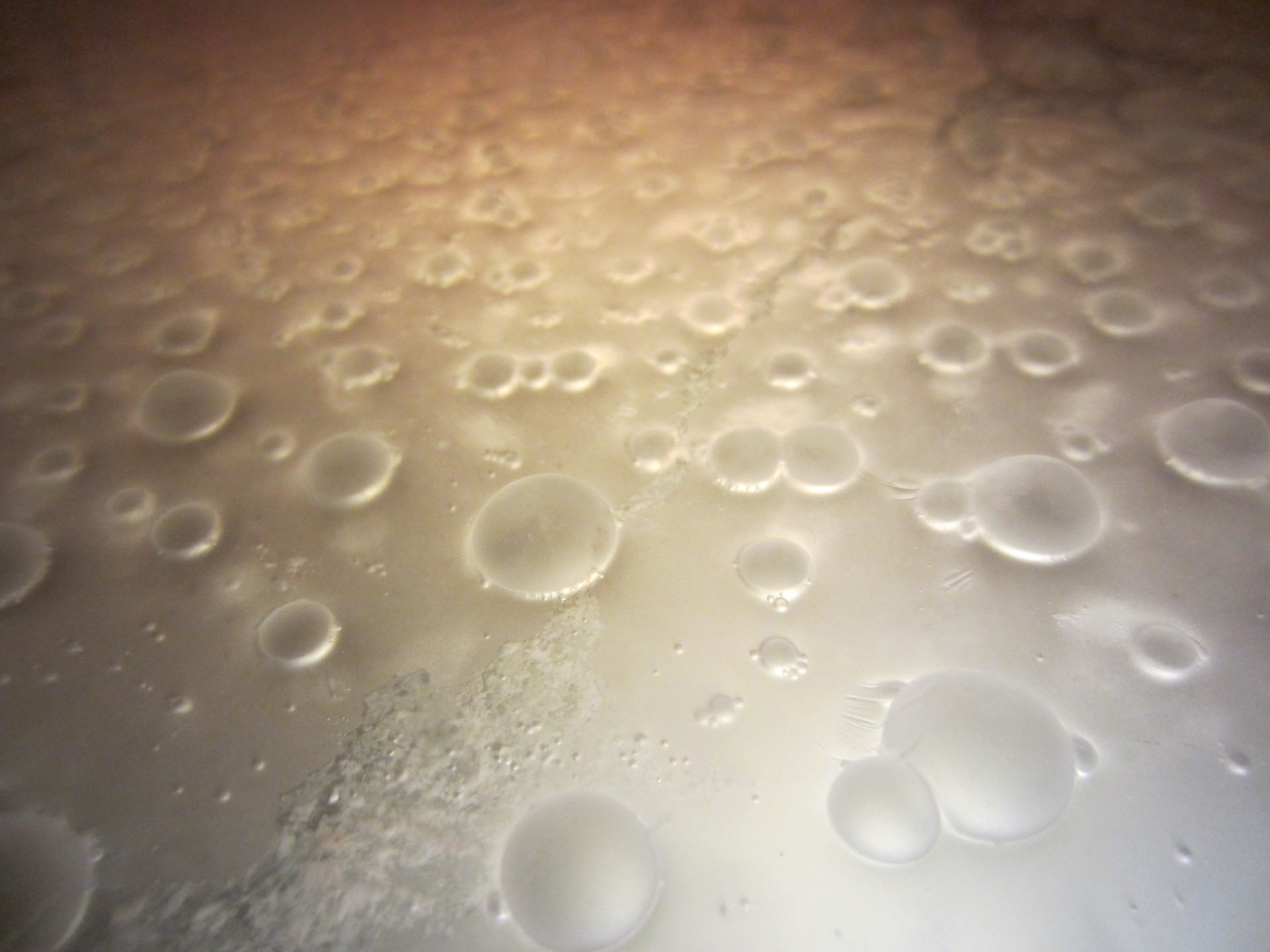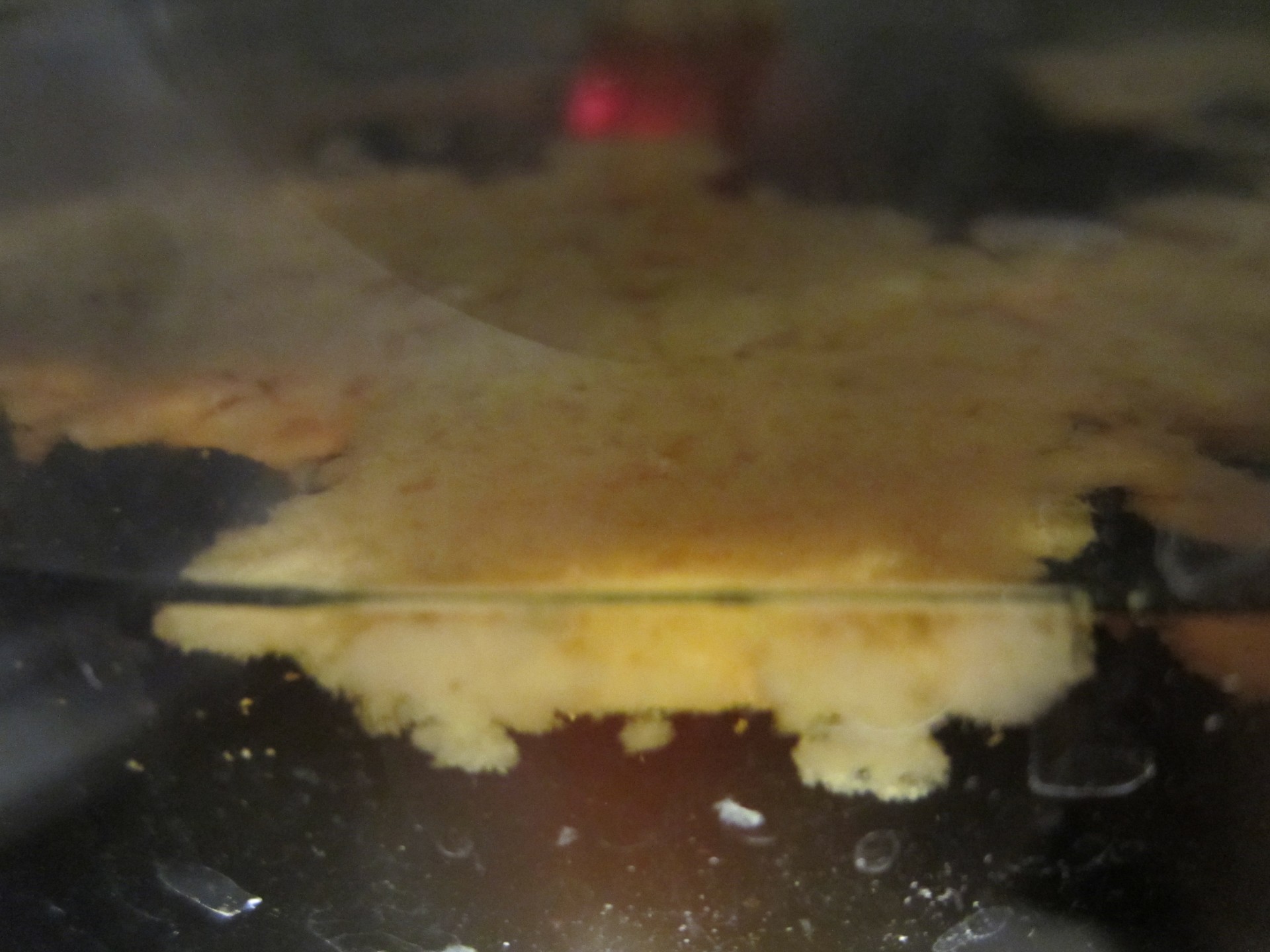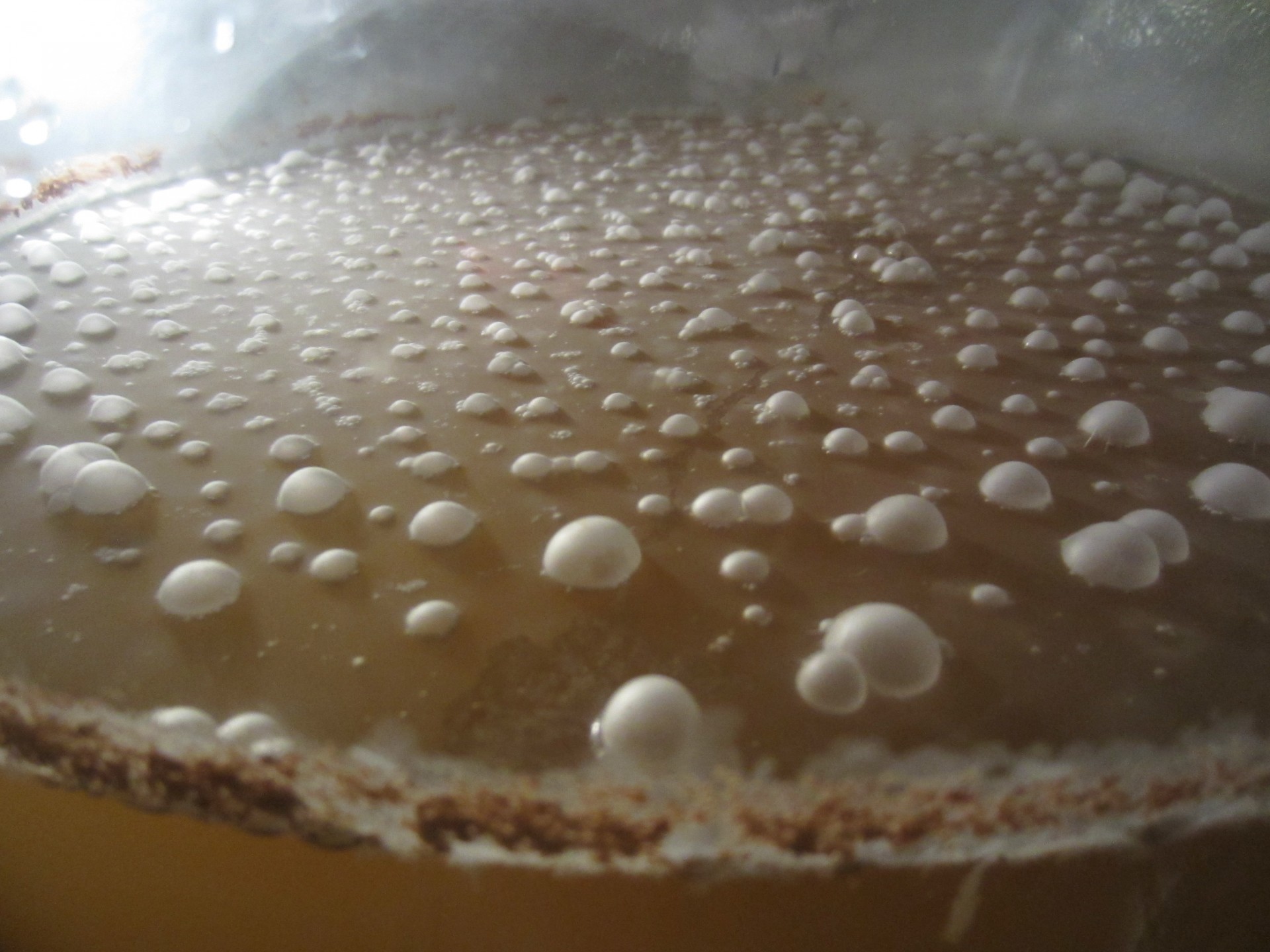Sooner or later, every homebrewer brews a batch of beer that doesn’t quite live up to expectations. Sometimes, a batch falls so far below the mark that a swirly sacrifice is rightfully demanded by the insatiable porcelain god.
Other times, the beer can be saved. So let’s talk about those other times. Those times when there’s still hope— when it’s still possible to bring your beer back from taking that final step into the light.
Let’s consider three cases in particular: infected beers, stuck fermentations, and meh beer, and then three corresponding solutions to each problem.
Fair warning: the better the beer you’re starting with, the greater the likelihood of successfully salvaging said beer. As far as brewing a quality beer goes, there are plenty of best practices including using fresh ingredients (malt, hops, yeast, etc.), following careful sanitation, fermentation, and recipe procedures, and a few other recommendations you can find on the Top 40 Ways to Improve Your Homebrew article.
Yes, in every case where your beer doesn’t turn out as perfect as intended, it’s a good idea to go back through your process and figure out how to improve it. But this article isn’t about woulda, shoulda, coulda nor are any of the solutions discussed here intended to be taken as a way around trying to brew the best beer possible from the very start. The aim here is to talk about what can be done on those hopefully rare occasions where you find yourself with less than satisfactory homebrew.
The Infection Resurrection
Hang out long enough in any online brewing circle, and invariably an anxious brewer will post a photo of something growing on top of their beer inside a fermentor along with a question like “Is my beer infected?”
For practical purposes, an infected beer simply means that some uninvited dinner guest (usually wild yeast and/or bacteria) has gotten into your beer and started to chow down, potentially altering the brew’s intended character. To be clear, an “infected” beer is a matter of prospective. For example, if you were intentionally using 100% bacteria to ferment your beer and somehow a common ale yeast found its way into your beer, your beer would be “infected” with common ale yeast; sort of the same way roses in one person’s garden may be considered weeds in someone else’s.
Semantics aside, sometimes it’s possible to make an educated guess as to whether a beer fermented with common brewer’s yeast (Saccharomyces cerevisiae or Saccharomyces pastorianus) is “infected” with some other unintentional microorganism by simply looking at the beer in question. For instance, common souring bacteria like Lactobacillus or Pediococcus and sometimes yeast like Brettanomyces (Brett) can form a pellicle (protective barrier) on top of beer which often looks like a layer of off-white or tan stationary bubbles covered with chalk dust or powdered sugar as in the image below.
Other times, it’s harder to tell if a beer is infected based on appearance alone as with the picture below of an uninfected Imperial IPA fermented only with Safale US-05 (formerly called US-56) which formed “yeast rafts”, or clumps of flocculated yeast, floating throughout and on top of the beer in the fermentor.
[While only aesthetically unappealing if present, yeast rafts can be settled to the bottom of the fermentor after about a week of cold crashing (i.e. lowering the temperature of the beer to near 32° F), and gently rocking the fermentor while cold. Otherwise, the rafts can be skimmed or filtered out.]
Needless to say, an infection usually suggests that you need to tighten up your cleaning and sanitation procedures, being particularly mindful of anything that comes into contact with your wort.
With respect to bacteria-formed pellicles, the earlier an infection is caught, the better chance you may have of minimizing the effects of the infection by lowering the temperature of the beer.
But, and this is critical, EVEN IF you find a full-blown pellicle formed inside your fermentation vessel, it’s not recommended that you automatically dump your beer. You have to smell and taste your beer first (pull a sample using a sanitized wine thief or turkey baster) in order to make the best decision. Depending on the stowaway bacteria or wild yeast, your beer may or may not turn sour or funky.
For example, the image of the Lactobacillus pellicle in the photo below occurred after pitching a mixed culture of yeast and the lactic acid producing souring bacteria, Lactobacillus. Even after months of aging with a visible pellicle and then a year of bottle conditioning, the beer never really turned sour. In fact, it’d probably be an overstatement to say that the beer was vaguely tart, but it was nevertheless exceptionally refreshing and delicious with no hint of an off-flavor.
Naturally, it may be helpful to attempt to deduce what type of pellicle-forming microorganism(s) you’re dealing with in order to respond accordingly, although 100% positive identification would require an appropriate microscope and proper training, assuming the microorganism(s) in question has already been identified and recognized by science.
Profiling Possible Invaders
Three common safe-to-consume pellicle-forming bacteria are Lactobacillus, Pediococcus, and Acetobacter, and the yeast Brettanomyces may form one as well. Although it may not be possible to identify the mystery bacteria or yeast by the particular appearance of the pellicle, smelling and tasting the infected beer may potentially narrow things down, especially if you know a little bit about how the different microorganisms can behave.
Lactobacillus is probably the least influential of the bunch, often adding nothing more than mildly tart amounts of lactic acid over the course of about a month. Pediococcus, on the other hand, typically takes a longer time to ramp up lactic acid production compared to Lactobacillus (months versus weeks), but produces lactic acid over a longer time period and the sourness is often increasingly more noticeable than with Lactobacillus.
But even more telltale of Pediococcus is the buttery byproducts (diacetyl) that most strains produce. If you like your new buttermilk beer, roll with it. But if you’d like to remove the butter and leave the sour, try inoculating your brew with a vial of Brettanomyces (Brett) yeast which should clean up the diacetyl for you. In addition, some strains of Pediococcus may eventually develop slimy, viscous, gelatinous “ropy” strands in beer, which can also be eliminated in a few weeks after adding a culture of Brett.
Speaking of Brett, if you see a pellicle, you may be able to further speculate on the presence of Brettanomyces based on the aroma. Depending on the strain of Brett, and there are quite a few, you might detect aromas of pineapple, mango, apricot, peaches, pear, mustiness, or horsiness and the taste may be tart or not. Although with significant quantities of oxygen, Brett can produce acetic acid as well, but not as easily and quickly as Acetobacter.
Acetobacter is probably the most potent souring bacteria which can form a thin white film of a pellicle (few if any bubbles), but is easier to identify by its distinctive vinegar (acetic acid) aroma which can develop within a week, usually after primary fermentation is complete. Acetobacter thrives in warmer temperatures (75 – 85° F) and in oxygen-rich environments. Early detection is the best defense against Acetobacter which if left unchecked will continue to convert ethanol into acetic acid, potentially leaving you with an intensely vinegar-y beer. Luckily, the majority of beer styles are fermented below 75° F, but reducing the temperature and ensuring that your fermentor is properly sealed are two actions that can reduce the effects of Acetobacter.
It should also be noted that bacteria and Brett do not always form a pellicle (they only do so in the presence of oxygen), which means your beer could develop an infection with no visual indicator.
To be clear, the presence of a pellicle does not mean that your beer will make you sick, nor does it mean that the character of your beer will have changed for the worse. And as discussed, depending on the pellicle-forming microorganism in question, the beer may not even become tart, let alone sour. Lastly, if you notice an unexpected pellicle, there may be more than one type of bacteria and/or Brett at work.
Hold ‘em Or Fold ‘em
If you’re uncertain about the type of bacteria (or yeast) forming the pellicle on your beer and you happen to be an adventurous sour fan, why not double down and add a culture of a pre-mixed bug blend like WLP 665 or dregs from one of your favorite unpasteurized sour beers to your existing beer, wait three months to a year and you might have created a most epic accidental sour. If this is your first sour, just remember that unlike a yeast krausen, a pellicle may never fall, so when you’re ready to rack your beer away from an existing pellicle, simply pierce the pellicle with your auto-siphon and proceed as normal (just try to leave the pellicle behind when racking underneath it).
If you decide to let the infection run its course, keep in mind that bacteria like Lactobacillus and Pediococcus may consume sugars and reduce the gravity of the beer slowly over time (weeks and months, respectively), so you’ll want to take gravity readings until you notice no change in gravity after a three day period (five days to be safer), particularly if you’re bottling (in order to avoid potential bottle bombs).
If you don’t want to find out where the unknown bacteria or yeast in your beer may be taking you, smell and taste your beer, and if it tastes good enough, you may decide to keg or bottle the beer and drink it immediately. If bottling before the bacteria or wild yeast has finished fermenting your beer, the microorganisms may very well still be producing excess CO2 in your bottles and you are taking the risk of potential bottle bombs. So to mitigate that risk, as soon as your bottled beer is carbonated to your liking, refrigerate the beer and keep it cold as bacteria and yeast tend to slow the rate of metabolism at lower temperatures.
Whether you decide to drink the infected beer quickly or let it age in the fermentor, it’s recommended that you buy a new set of whatever plastic and vinyl equipment that comes in contact with the infected beer so as to avoid accidentally contaminating future batches of beer.
Mold and Beer
If you notice black, green, or fuzzy hairy patches growing on your beer, mold is the likely suspect. A couple cases where mold has been known to crash the party are when unsanitized fruit or wood is added to the fermentor.
Now, what to do in the case of mold is somewhat controversial. John Palmer advised in his book How to Brew, that if you encounter mold, take a sample of the beer, and if it doesn’t taste foul, you can skim the mold off [or rack the beer out] with no lasting effect on the beer’s flavor and infections in beer caused by mold are not dangerous.
However, the USDA points out that while some molds are beneficial, there are types of mold that cause allergic reactions, respiratory problems and produce poisonous mycotoxins that can make you sick. One such mycotoxin called “aflatoxin” is produced by some species of Aspergillus mold (A. fumigatus and A. flavus), and can be found on grain and groundnuts; aflatoxin is both carcinogenic and can be a deadly toxin in high enough exposure levels.
Scientific research on the ability of foodborne pathogens to survive in beer is scarce. While one study [2014] showed that certain common bacterial pathogens could survive in fermented beer for up to several weeks, no mold (fungal) pathogens were tested. Another study [2011] demonstrated poor survival of common bacterial pathogens in moderately hopped wort, with a final ethanol concentration of 5 % ABV, and concluded that if the pathogens tested* were to contaminate such a wort, “there would be no immediate concern to public health.” [* Tested pathogens: Escherichia coli O157:H7, Salmonella Typhimurium, Listeria monocytogenes, and Staphylococcus aureus.]
Again, no molds were tested in either case, so until there are more (or any) scientific studies concerning the growth and survival of pathogenic mold species in beer, proceed at your own risk when it comes to mold.
One final note to keep in mind about infected beer is that it may not turn out as you originally planned prior to the infection, and you may not personally like the end result or want to tie up your brewing equipment while the beer develops. That said, an infection doesn’t mean the beer is unsafe to drink nor does it mean the beer can’t be saved. If you have the time and patience (and a penchant for sours, depending on your particular infection), you may be pleasantly surprised with the final product.
Cheers!
P.S. Join us next time where we’ll wrap up the discussion of how to save a bad batch of homebrew with tips on how to bounce back from a stuck fermentation and how to transform meh beer into a meh-raculous brew.
[As fate would have it, “next time” is already here. Read part two of this article, How to Save a Bad Batch of Homebrew- Part 2]
Like this blog? Well, thanks- you’re far too kind.
Tweet-worthy? That would be very kind of you: Tweet
Want to read more beer inspired thoughts? Come back any time, friend us on Facebook, or follow us on Twitter:
Or feel free to drop me a line at: dan@beersyndicate.com
Hi, I’m Dan: Beer Editor for Beer Syndicate, Beer and Drinking Blogger, Gold Medal-Winning Homebrewer, Beer Reviewer, AHA Member, Beer Judge, Shameless Beer Promoter, and Beer Traveler. Interests? Beer.




